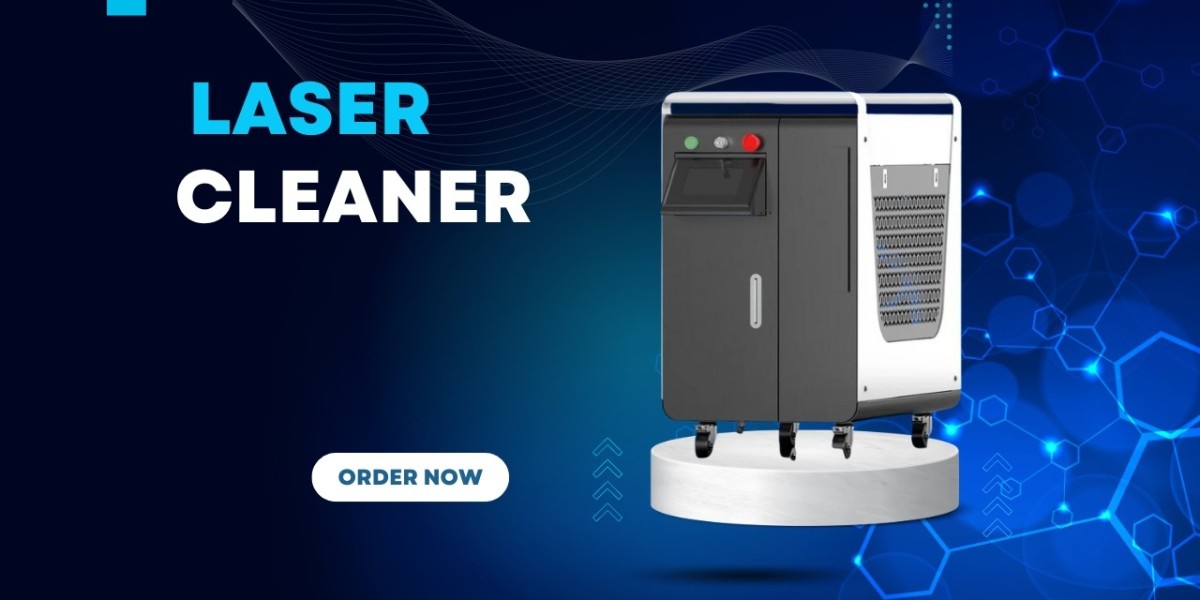In today's rapidly advancing technological landscape, businesses across industries are continually seeking ways to improve efficiency while reducing their environmental impact. Enter the laser cleaner – a groundbreaking innovation that is redefining the way surfaces are cleaned and maintained. This powerful technology utilizes laser beams to remove contaminants, rust, and coatings from materials, offering numerous benefits over traditional methods.
Laser cleaning offers a wide array of advantages that are transforming industries such as manufacturing, automotive, aerospace, and more. In this blog, we will explore what laser cleaning is, how it works, and why it's the future of surface cleaning.
What is Laser Cleaning?
Laser cleaning, as the name suggests, involves the use of high-powered laser beams to remove unwanted material from surfaces. The laser is directed at the surface, and the energy from the laser causes the contaminants or rust to evaporate, melt, or be mechanically ejected from the material. This process is both precise and efficient, offering a high level of control over the cleaning action.
Laser cleaners can be used to remove a wide range of contaminants, including:
- Rust and corrosion from metal surfaces
- Old coatings such as paint, varnish, and adhesive residues
- Oil, dirt, and grime from industrial machinery
- Pollutants like soot or dirt from delicate equipment
By eliminating the need for harsh chemicals or abrasive cleaning methods, laser cleaners offer a safer, more sustainable approach to maintaining surfaces.
How Does a Laser Cleaner Work?
A laser cleaning system operates by emitting high-intensity laser pulses aimed at the surface to be cleaned. These pulses are finely tuned to the specific type of material being cleaned and the contaminants that need to be removed. The interaction between the laser light and the material causes the contaminants to either evaporate or be ejected from the surface. This precise and non-contact cleaning process avoids damage to the underlying material.
There are two main types of laser cleaning:
- Continuous Wave (CW) Lasers: These lasers emit a steady beam of light, providing consistent cleaning power over an area.
- Pulsed Lasers: These lasers release short bursts of light, creating intense, high-energy pulses that are ideal for removing tough contaminants such as rust or paint.
Both types of lasers have specific applications depending on the nature of the material being cleaned and the level of contamination present.
Why Choose Laser Cleaning?
Eco-Friendly: Traditional cleaning methods often require the use of chemicals, abrasives, or solvents, which can be harmful to the environment. Laser cleaning eliminates the need for these substances, offering a greener alternative. It also generates minimal waste, as only the contaminant is removed, leaving the surface undamaged.
Cost-Effective: While the initial investment in laser cleaning equipment can be significant, the long-term benefits are undeniable. Laser cleaning systems require less maintenance compared to other cleaning machines, and they consume less power, leading to lower operational costs. Additionally, there is no need to purchase cleaning agents or abrasives, further reducing ongoing expenses.
Precision and Control: One of the key benefits of laser cleaning is its precision. Unlike traditional methods, which can be abrasive or damaging, laser cleaning can target specific areas with high accuracy. This makes it perfect for delicate applications where the integrity of the underlying material must be preserved.
Non-Contact Process: Laser cleaning is a non-contact method, meaning there is no direct physical interaction with the surface being cleaned. This eliminates the risk of surface wear and tear that can occur with abrasive methods, preserving the material's longevity.
Versatility: Laser cleaners are highly versatile, capable of cleaning a wide range of materials, including metals, ceramics, plastics, and composites. Whether you're dealing with rust, oil stains, or stubborn paint layers, laser cleaning can be adapted to meet your needs.
Time-Saving: Traditional cleaning methods can be time-consuming, especially when dealing with large or complex surfaces. Laser cleaners offer fast and efficient cleaning, reducing downtime and improving productivity in industrial settings.
Applications of Laser Cleaning
Laser cleaning technology has numerous applications across various industries. Some of the most common use cases include:
- Automotive Industry: Cleaning metal parts, removing rust, and preparing surfaces for welding or coating.
- Aerospace: Maintaining delicate components such as turbine blades, removing contaminants, and ensuring parts meet strict safety standards.
- Manufacturing: Preparing surfaces for coating, deburring, and removing old paint or coatings from machinery.
- Cultural Heritage Restoration: Safely cleaning and preserving delicate artifacts and statues without causing damage.
Conclusion
Laser cleaning is a cutting-edge technology that is reshaping the way we approach surface maintenance and cleaning. With its eco-friendly, precise, and efficient operation, it's becoming a game-changer in various industries. As businesses continue to prioritize sustainability and cost-effectiveness, laser cleaner is poised to become the go-to solution for surface cleaning and maintenance.
The future of cleaning is here, and it's powered by lasers. By adopting this innovative technology, industries can enjoy cleaner surfaces, reduced environmental impact, and significant cost savings, all while maintaining the integrity of their materials.







